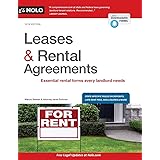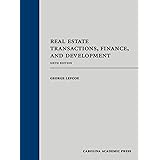As discussed in the accompanying video, the real estate market in 2025 presents a distinct set of challenges and opportunities for investors, particularly those engaged in house flipping. While the fervor of previous years may have waned, a more calculated and strategic approach is currently being demanded. The slowdown in market velocity, characterized by extended days on market for flipped properties, necessitates a paradigm shift in how investment decisions are made and executed. This article delves deeper into the crucial strategies that can be employed to navigate this evolving landscape successfully.
Navigating the 2025 Real Estate Market: A Flipper’s Perspective
The prevailing sentiment among real estate professionals, as articulated by Jean Guirand, a local investor and hard money lender in Florida, is that the market is currently experiencing a period of adjustment. Properties are taking longer to sell, and the once rapid turnaround times associated with flipping are becoming less common. This shift is observed not only in specific regional markets but also across a broader spectrum of states, indicating a nationwide trend of reduced buyer urgency. Consequently, a heightened level of due diligence and risk assessment is required for every potential acquisition.
Market Slowdown and Days on Market (DOM)
A key indicator of the current market’s temperament is the increase in Days on Market (DOM) for flipped homes. Historically, a quick sale was often anticipated, sometimes within weeks of listing. However, in 2025, it is not uncommon for properties to remain on the market for several months. For example, a property in a self-described “growth area” was mentioned as having been on the market for 129 days, with an additional 30 days expected. Such prolonged holding periods directly impact profitability by increasing carrying costs and tying up capital, thus reducing the Internal Rate of Return (IRR) on an investment.
This extended sales cycle is influenced by several factors. A saturation of available inventory in some price points, coupled with a more discerning buyer pool, contributes to properties lingering. Furthermore, economic uncertainties and fluctuating interest rates mean that prospective buyers are exercising greater caution before committing to a purchase. It has been observed that even established flippers, who once completed numerous deals annually, are now exercising more restraint. Data points suggest that some experienced investors who closed 40 deals in 2023 reduced their volume to 25 deals in 2024, representing a significant recalibration of their operational capacity.
Strategic Property Selection and Due Diligence
In a slowing market, the criticality of astute property selection cannot be overstated. Investors are being advised to be exceptionally “cognizant of what properties are being bought,” focusing on quality, location, and the potential for added value. The margin for error is significantly reduced, meaning that marginal deals with high inherent risks are now largely being avoided by seasoned professionals.
Location, Finishes, and Incentives: The Triad of Success
The adage “location, location, location” remains paramount, yet its definition has evolved. While desirable neighborhoods always command attention, even in growth areas, properties are being scrutinized more intensely. It is suggested that properties in locations perceived as undergoing significant transformation may struggle unless they offer exceptional value propositions. The quality of finishes is also a differentiating factor; a high standard of renovation is no longer just a bonus but a fundamental expectation. Buyers in 2025 are less likely to overlook deficiencies, preferring move-in-ready homes with contemporary aesthetics.
Crucially, the provision of buyer incentives has become an almost mandatory component for properties priced below the $800,000 threshold, particularly in the $330,000 to $500,000 range prevalent in Central Florida and other parts of the state. These incentives often take the form of covering agent commissions or providing credits for closing costs. This practice effectively reduces the upfront financial burden for buyers, making a property more attractive in a competitive market. Conversations with realtors confirm a widespread trend of credits being offered to facilitate transactions, a clear indication of a buyer-centric market shift.
Competition and Risk Mitigation in Flipping Houses in 2025
Flippers are currently contending with robust competition from new construction, which frequently offers enticing incentives such as upgraded features, extended warranties, and developer-paid closing costs. These offerings often outweigh the perceived value of a renovated resale, particularly for buyers who prioritize newness and minimal maintenance. This necessitates that flipped homes provide a compelling value proposition that rivals what new builders can deliver.
Understanding and Mitigating Risk for New and Experienced Investors
For individuals considering their first foray into house flipping, the current market climate carries elevated risks. The advice given is unequivocal: “If you don’t see a lot of flippers in the market, don’t flip there for your first time.” Markets with limited flipping activity often lack the necessary buyer demand or market liquidity to support quick, profitable sales. It is generally recommended that new flippers gain experience in more stable or established flipping markets where exit strategies are clearer and less speculative. The presence of one or two experienced flippers in a given area might indicate potential, but it is often better for newcomers to observe before entering.
Property types also play a significant role in risk assessment. In regions like Florida, properties constructed with wood frames and siding, rather than block and stucco, might face more resistance from buyers, depending on the prevalent construction norms. Such nuances in local market preferences must be meticulously understood and factored into the acquisition decision. Moreover, the long-term implications of holding a property that does not sell must be considered; the willingness and capacity to convert a flip into a rental property, should the market dictate, are increasingly vital components of a robust exit strategy.
Alternative Strategies and Financial Considerations
The current market environment is prompting many investors to re-evaluate their primary exit strategies. While flipping for a quick profit remains the ideal for many, the reality of extended DOM and slower sales is leading to a greater consideration of rental conversions. Holding properties as long-term rentals can provide steady cash flow, albeit with a different financial model and time horizon for capital appreciation.
Converting Flips to Rentals and Leveraging Financial Tools
Converting a property initially intended for flipping into a rental asset is a strategy being adopted by a growing number of investors. This approach allows capital to remain deployed, generating income, rather than being liquidated at an undesirable price. While it requires a different investment thesis, it can be a prudent pivot in a market that resists immediate high-profit sales. This adaptability ensures that capital is not idly sitting or sold at a loss, but rather repurposed to generate passive income.
Furthermore, investors should be keenly aware of the financial tools and tax advantages available to them. Options such as bonus depreciation and cost segregation studies can provide significant tax benefits, helping to offset holding costs and improve overall project profitability. Regarding funding, various solutions are being provided to investors. For instance, Debt Service Coverage Ratio (DSCR) loans are available for rental properties, offering a 30-year fixed rate and streamlined documentation processes based on the property’s rental income rather than the borrower’s personal income. These financial instruments are proving invaluable for investors looking to secure properties, whether for flipping or for long-term rental portfolios, especially in a market where traditional lending criteria might be more stringent. Throughout 2024, countless investors were serviced with such funding, and this trend is anticipated to continue into 2025, facilitating strategic acquisitions and portfolio growth.









